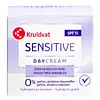What's inside
What's inside
 Key Ingredients
Key Ingredients

 Benefits
Benefits

 Concerns
Concerns

 Ingredients Side-by-side
Ingredients Side-by-side

Water
Skin ConditioningGlycerin
HumectantPropanediol
SolventDipentaerythrityl Hexa C5-9 Acid Esters
Skin ConditioningNeopentyl Glycol Diheptanoate
EmollientSqualane
EmollientPentaerythrityl Tetraisostearate
EmollientCetearyl Alcohol
EmollientGlyceryl Glucoside
HumectantPolyglyceryl-3 Distearate
Emulsifying1,2-Hexanediol
Skin ConditioningHydrogenated Lecithin
EmulsifyingCeramide NP
Skin ConditioningPotassium Cetyl Phosphate
EmulsifyingSodium Acrylate/Sodium Acryloyldimethyl Taurate Copolymer
Emulsion StabilisingSorbitan Stearate
EmulsifyingPolyisobutene
Caprylyl Glycol
EmollientGlyceryl Stearate Citrate
EmollientPalmitic Acid
EmollientMangifera Indica Seed Butter
Skin ConditioningXanthan Gum
EmulsifyingTocopherol
AntioxidantMacadamia Ternifolia Seed Oil
EmollientDisodium EDTA
Caprylic/Capric Triglyceride
MaskingSorbitan Oleate
EmulsifyingCaprylyl/Capryl Glucoside
CleansingSucrose Cocoate
EmulsifyingSodium Hyaluronate
HumectantBrassica Campestris Sterols
EmollientPhytosteryl/Behenyl/Octyldodecyl Lauroyl Glutamate
Skin ConditioningCholesterol
EmollientPolyglyceryl-10 Laurate
Skin ConditioningMyristic Acid
CleansingStearic Acid
CleansingCeramide Ns
Skin ConditioningCeramide EOP
Skin ConditioningWater, Glycerin, Propanediol, Dipentaerythrityl Hexa C5-9 Acid Esters, Neopentyl Glycol Diheptanoate, Squalane, Pentaerythrityl Tetraisostearate, Cetearyl Alcohol, Glyceryl Glucoside, Polyglyceryl-3 Distearate, 1,2-Hexanediol, Hydrogenated Lecithin, Ceramide NP, Potassium Cetyl Phosphate, Sodium Acrylate/Sodium Acryloyldimethyl Taurate Copolymer, Sorbitan Stearate, Polyisobutene, Caprylyl Glycol, Glyceryl Stearate Citrate, Palmitic Acid, Mangifera Indica Seed Butter, Xanthan Gum, Tocopherol, Macadamia Ternifolia Seed Oil, Disodium EDTA, Caprylic/Capric Triglyceride, Sorbitan Oleate, Caprylyl/Capryl Glucoside, Sucrose Cocoate, Sodium Hyaluronate, Brassica Campestris Sterols, Phytosteryl/Behenyl/Octyldodecyl Lauroyl Glutamate, Cholesterol, Polyglyceryl-10 Laurate, Myristic Acid, Stearic Acid, Ceramide Ns, Ceramide EOP
Water
Skin ConditioningOctocrylene
UV AbsorberDicaprylyl Ether
EmollientHomosalate
Skin ConditioningGlycerin
HumectantC12-15 Alkyl Benzoate
AntimicrobialCetearyl Alcohol
EmollientButyl Methoxydibenzoylmethane
UV AbsorberEthylhexyl Triazone
UV AbsorberSodium Polyacrylate
AbsorbentPhragmites Communis Extract
Skin ConditioningPoria Cocos Extract
Skin ConditioningSodium Stearoyl Glutamate
CleansingCaprylyl Glycol
EmollientEthylhexylglycerin
Skin ConditioningTetrasodium Glutamate Diacetate
Phenoxyethanol
PreservativeSodium Benzoate
MaskingTocopherol
AntioxidantWater, Octocrylene, Dicaprylyl Ether, Homosalate, Glycerin, C12-15 Alkyl Benzoate, Cetearyl Alcohol, Butyl Methoxydibenzoylmethane, Ethylhexyl Triazone, Sodium Polyacrylate, Phragmites Communis Extract, Poria Cocos Extract, Sodium Stearoyl Glutamate, Caprylyl Glycol, Ethylhexylglycerin, Tetrasodium Glutamate Diacetate, Phenoxyethanol, Sodium Benzoate, Tocopherol
 Reviews
Reviews

Ingredients Explained
These ingredients are found in both products.
Ingredients higher up in an ingredient list are typically present in a larger amount.
Caprylyl Glycol is a humectant and emollient, meaning it attracts and preserves moisture.
It is a common ingredient in many products, especially those designed to hydrate skin. The primary benefits are retaining moisture, skin softening, and promoting a healthy skin barrier.
Though Caprylyl Glycol is an alcohol derived from fatty acids, it is not the kind that can dry out skin.
This ingredient is also used as a preservative to extend the life of products. It has slight antimicrobial properties.
Learn more about Caprylyl GlycolCetearyl alcohol is a mixture of two fatty alcohols: cetyl alcohol and stearyl alcohol. It is mainly used as an emulsifier. Emulsifiers help prevent the separation of oils and products. Due to its composition, it can also be used to thicken a product or help create foam.
Cetearyl alcohol is an emollient. Emollients help soothe and hydrate the skin by trapping moisture.
Studies show Cetearyl alcohol is non-toxic and non-irritating. The FDA allows products labeled "alcohol-free" to have fatty alcohols.
This ingredient is usually derived from plant oils such as palm, vegetable, or coconut oils. There is debate on whether this ingredient will cause acne.
Due to the fatty acid base, this ingredient may not be Malassezia folliculitis safe.
Learn more about Cetearyl AlcoholGlycerin is already naturally found in your skin. It helps moisturize and protect your skin.
A study from 2016 found glycerin to be more effective as a humectant than AHAs and hyaluronic acid.
As a humectant, it helps the skin stay hydrated by pulling moisture to your skin. The low molecular weight of glycerin allows it to pull moisture into the deeper layers of your skin.
Hydrated skin improves your skin barrier; Your skin barrier helps protect against irritants and bacteria.
Glycerin has also been found to have antimicrobial and antiviral properties. Due to these properties, glycerin is often used in wound and burn treatments.
In cosmetics, glycerin is usually derived from plants such as soybean or palm. However, it can also be sourced from animals, such as tallow or animal fat.
This ingredient is organic, colorless, odorless, and non-toxic.
Glycerin is the name for this ingredient in American English. British English uses Glycerol/Glycerine.
Learn more about GlycerinTocopherol (also known as Vitamin E) is a common antioxidant used to help protect the skin from free-radicals and strengthen the skin barrier. It's also fat soluble - this means our skin is great at absorbing it.
Vitamin E also helps keep your natural skin lipids healthy. Your lipid skin barrier naturally consists of lipids, ceramides, and fatty acids. Vitamin E offers extra protection for your skin’s lipid barrier, keeping your skin healthy and nourished.
Another benefit is a bit of UV protection. Vitamin E helps reduce the damage caused by UVB rays. (It should not replace your sunscreen). Combining it with Vitamin C can decrease sunburned cells and hyperpigmentation after UV exposure.
You might have noticed Vitamin E + C often paired together. This is because it is great at stabilizing Vitamin C. Using the two together helps increase the effectiveness of both ingredients.
There are often claims that Vitamin E can reduce/prevent scarring, but these claims haven't been confirmed by scientific research.
Learn more about TocopherolWater. It's the most common cosmetic ingredient of all. You'll usually see it at the top of ingredient lists, meaning that it makes up the largest part of the product.
So why is it so popular? Water most often acts as a solvent - this means that it helps dissolve other ingredients into the formulation.
You'll also recognize water as that liquid we all need to stay alive. If you see this, drink a glass of water. Stay hydrated!
Learn more about Water